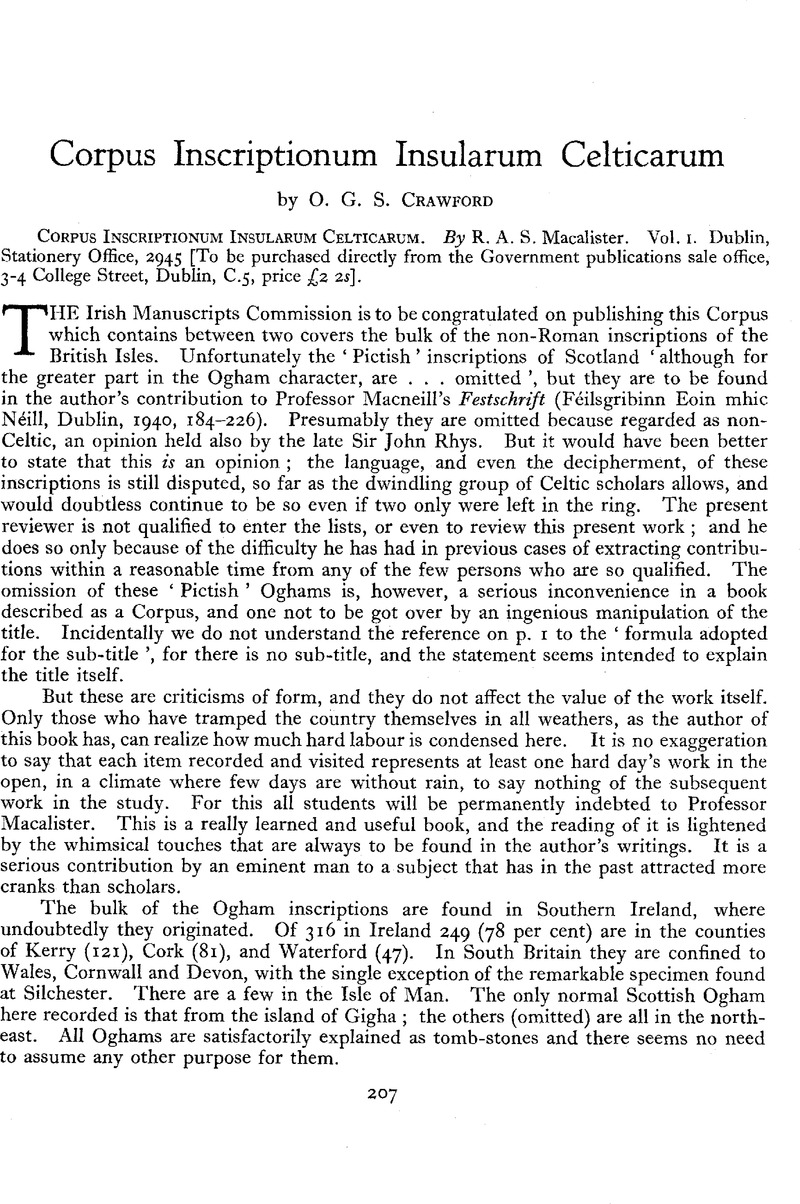No CrossRef data available.
Article contents
Corpus Inscriptionum Insularum Celticarum
Published online by Cambridge University Press: 02 January 2015
Abstract

- Type
- Review Article
- Information
- Copyright
- Copyright © Antiquity Publications Ltd 1945
References
1 Professor Macalister states that ‘the only possible explanation is that it is a G, derived not from the Roman but from the Greek alphabet’, the writer having ‘inherited his knowledge of the Latin alphabet from some people, whoever they may have been, who had taken over the script before the Romans had differentiated the signs C, G’. That is considered by some authorities to have taken place in the fourth century before Christ. But what people in Europe had then done this ? And, even so, Ireland is a long way from Europe. If these things did happen, there would surely be some other evidence besides a single letter in a single inscription—and a mutilated letter at that! The stone on which this inscription is cut is now in the Dublin Museum, and it should be re-examined.
The Donegal inscription was not seen by Professor Macalister whose interpretation is based upon a squeeze. Another inscription on the island (in Lough Derg) is dated 1551, and although the lettering here reproduced (p. 302) certainly looks good and early, one cannot help wondering whether it really is. Some of the lettering on early 17th century tombstones in English churchyards is not unlike this. It is attributed to the pre-Christian period, and explained as recording the visit of two persons (Ornecnus et Elisa) to the island ‘for the purpose of obtaining an oracular vision’.
I have dealt rather fully with these two inscriptions because they would be important if their age and authenticity could be firmly established. Unfortunately that has not yet been done. A couple of really good photographs taken in the right light (a side light of course) would go a long way to decide matters. Surely some one could do this and publish the results? Until then one has not the means of forming a sound positive opinion.
2 The right-hand part of the R is plainly visible on both the original and on the cast in the Edinburgh Museum. It is also quite clear on the original photograph from which this plate was reproduced.
3 It is interesting to note that Cormac mentions a Goidel fort presumably in Britain, though the language is obscure, as having a triple fosse. Such forts occur in Cornwall, though two fosses only are more usual. The one mentioned is given two names DIND TRADUI and DUN TREDUI and is assigned to Crimthann the Great, ‘ King of Ireland, and Britain as far as the English Channel’. His date is usually given as A.D. 366–79.


